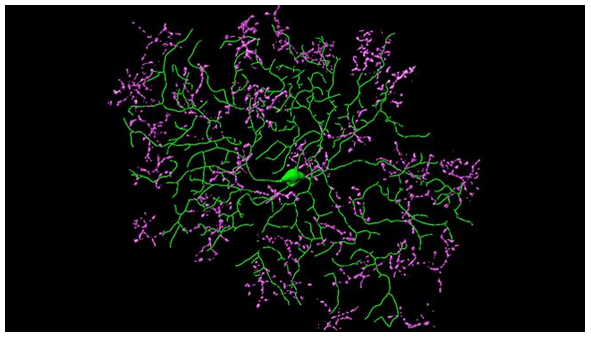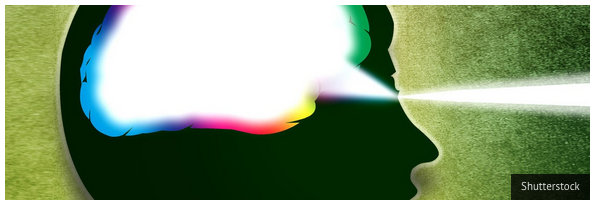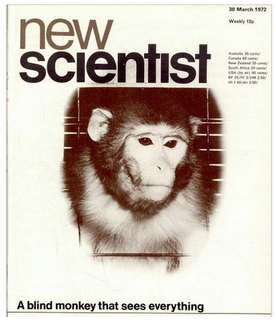It seems like an otherworldly phenomenon, but researchers are increasingly uncovering the anatomical roots of blindsight in the brain. Such research might one day lead to ways for some people with blindness to make the most of this effect.
Thought and other higher brain functions arise from the cerebral cortex, the outer layer and the largest part of the human brain. The first part of the cortex to receive visual signals from the eye is the primary visual cortex, located in the back of the head. Since at least the 19th century it was known that damage to this area could lead to blindness even if the eyes worked fine. But during the World War I, World War II and Korean War neurologists started to suspect that victims with primary visual cortex damage were not completely blind.
The first compelling evidence for blindsight came in 1967 from a rhesus monkey named Helen. Psychologists Nicholas Humphrey and Lawrence Weiskrantz at the University of Cambridge in England had removed Helen's entire primary visual cortex to learn more about the role of this brain area in normal vision. For two years, Helen seemed almost completely blind, capable of distinguishing little more than light from dark.
However, sometimes Helen behaved as if she could see.
"Over several days, I sat by Helen's cage and played with her," Humphrey wrote about the research. "To my delight, it soon became clear that this blind monkey was sometimes watching what I did. For example, I would hold up a piece of apple and wave it in front of her, and she would clearly look, before reaching out to try to get it from me. As the game continued, she soon changed from being a monkey who sat around listlessly, gazing blankly into the distance, to one who had become interested and involved in vision again."
The researchers suspected that perhaps other parts of Helen's brain that remained intact supported a degree of visual behavior. Helen's case suggested that it was indeed possible to respond to visual stimuli without conscious perception.
"Slowly but surely her sight got better," Humphrey wrote. "Eventually she could, for example, run around a room full of obstacles picking up crumbs off the floor. Anyone who was unaware that she had no visual cortex could well have assumed she had completely normal vision."
Still, Humphrey noted there was something insecure about Helen's behavior.
"Although I found it hard to put my finger on what was wrong, my sense was that she still did not really believe that she could see," Humphrey wrote. "There were telling hints in her behavior. For example, if she was upset or frightened, she would stumble about as if she was in the dark again. It was as if she could only see provided she did not try too hard."
Soon after the researchers analyzed a man called DB, the first reported person with blindsight. The right half of DB's primary visual cortex was surgically removed because of a tumor. The right part of the brain deals with visual signals from the left half of the visual field, and vice versa, so the surgery made DB blind in the left half of his field of vision since age 26.
In experiments, although DB said he did not see anything in his left visual field, he nevertheless could accurately "guess" many properties of targets presented there, such as shape, location and movement. As research with Helen suggested, although DB displayed signs of visual behavior, he was not consciously aware of it, a kind of unconscious vision Weiskrantz later dubbed blindsight.
"He was astonished when shown his results," Weiskrantz wrote. "DB remained convinced that he was simply guessing."
Scientists think blindsight may be due to visual signals flowing from the eye through neural pathways that bypass the primary visual cortex to reach other areas in the cortex. One research group that used magnetic pulses to temporarily shut down the primary visual cortex in volunteers with normal vision, found the participants could correctly guess whether a red or green dot flashed on a video screen 81 percent of the time. Other researchers found a man with blindsight, TN, who could respond to facial expressions and successfully navigate an obstacle course without colliding into anything.

Scientists are now investigating ways to train brains to consciously see what blindsight helps them detect.
Scientists are now investigating ways to train brains to consciously see what blindsight helps them detect. Schwiedrzik has worked on the question whether this is in principle possible using a technique called 'backward masking' that allows researchers to mimic a state of blindness in normally sighted subjects. "By presenting two images in rapid succession, we can render the first image invisible. We then trained subjects over many days to nevertheless try to discriminate two different invisible stimuli."
"Astonishingly, subjects are first able to discriminate the stimuli without consciously perceiving them, similar to what blindsight patients can do," Schwiedrzik said. "But, if we continue training, the subjects started to also consciously experience the stimuli we showed them, although they were initially completely invisible to them. This indicates that the threshold of perception is not fixed, but that it can be altered by the intrinsic plasticity of the brain, even in the adult."





perhaps yet again, another case of mind vs brain?